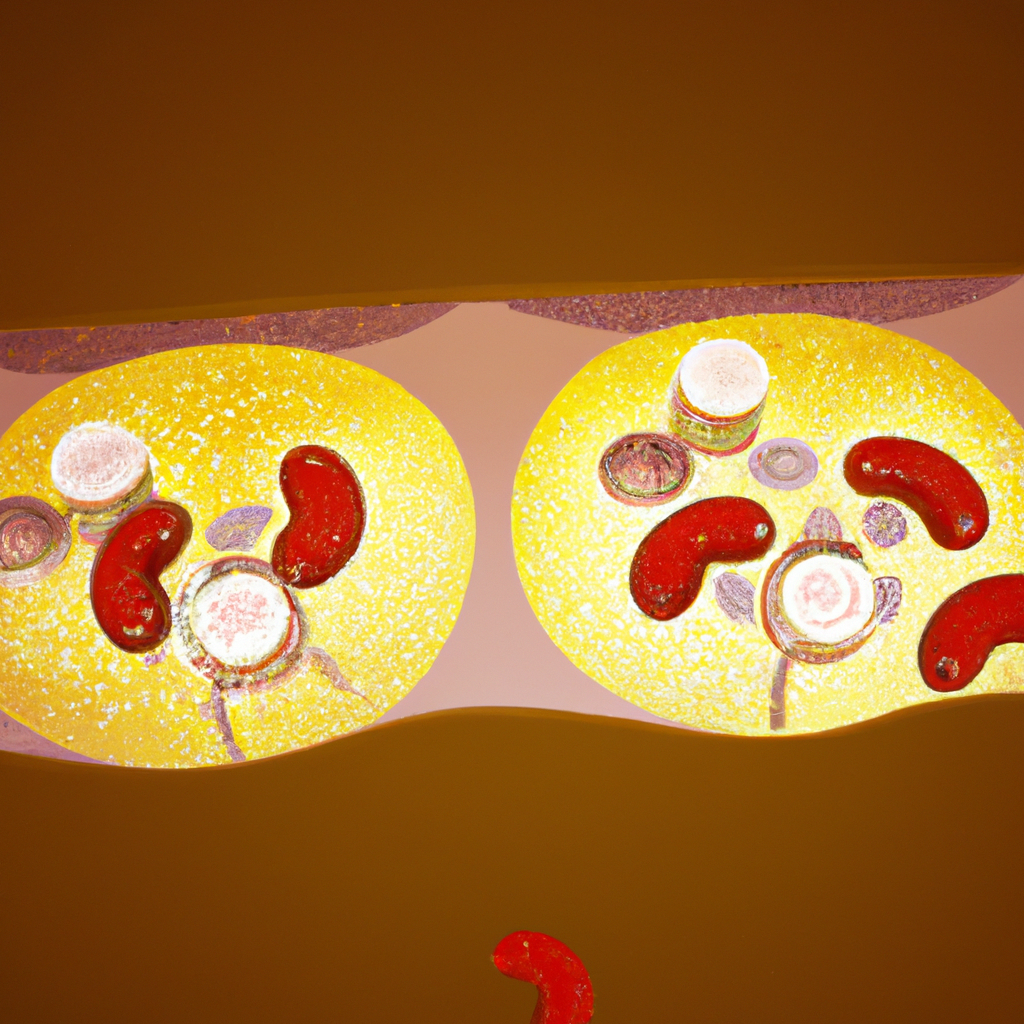-
Reading Roadmap
- A Potential Approach to Alleviate Diabetic Kidney Damage: Focusing on REDD1 in Podocytes
- Key Takeaways
- Introduction: Unraveling the Role of REDD1 in Diabetic Kidney Disease
- REDD1: A Potential Therapeutic Target
- Podocytes: The Key to Kidney Filtration
- FAQ Section: Understanding REDD1 and Diabetic Kidney Disease
- What is diabetic kidney disease?
- What are podocytes?
- What is REDD1?
- How could targeting REDD1 help in DKD?
- What further research is needed?
- Conclusion: The Promise of REDD1 as a Therapeutic Target
- Key Takeaways Revisited
A Potential Approach to Alleviate Diabetic Kidney Damage: Focusing on REDD1 in Podocytes

[youtubomatic_search]
Key Takeaways
- Diabetic kidney disease is a major complication of diabetes, affecting millions worldwide.
- REDD1, a stress response protein, has been identified as a potential target for therapeutic intervention.
- Studies have shown that REDD1 is upregulated in podocytes, the cells responsible for kidney filtration, in diabetic conditions.
- Targeting REDD1 in podocytes could potentially alleviate kidney damage in diabetic patients.
- Further research is needed to fully understand the role of REDD1 in diabetic kidney disease and to develop effective treatments.
Introduction: Unraveling the Role of REDD1 in Diabetic Kidney Disease
Diabetes is a global health crisis, affecting over 422 million people worldwide according to the World Health Organization. One of the most severe complications of diabetes is diabetic kidney disease (DKD), which can lead to end-stage renal disease and necessitate dialysis or kidney transplantation. Despite advances in treatment, the prevalence of DKD continues to rise, underscoring the need for novel therapeutic strategies.
Recent research has identified the stress response protein REDD1 as a potential target for intervention. This protein has been found to be upregulated in podocytes, the cells responsible for kidney filtration, under diabetic conditions. This article explores the potential of targeting REDD1 in podocytes as a novel approach to alleviate kidney damage in diabetic patients.
REDD1: A Potential Therapeutic Target
REDD1 (Regulated in Development and DNA Damage responses 1) is a protein that is induced under conditions of cellular stress. In the context of diabetes, high blood glucose levels can cause oxidative stress and inflammation, leading to the upregulation of REDD1. Studies have shown that this upregulation occurs specifically in podocytes, suggesting a potential role in the development of DKD.
Research has also shown that REDD1 can induce podocyte apoptosis, or programmed cell death, contributing to the loss of kidney function in DKD. Therefore, targeting REDD1 could potentially prevent podocyte loss and alleviate kidney damage.
Podocytes: The Key to Kidney Filtration
Podocytes are specialized cells in the kidney that play a crucial role in the filtration of blood. They form a barrier that prevents the leakage of proteins into the urine, a process that is disrupted in DKD. The loss of podocytes is a hallmark of DKD, and strategies to protect these cells could potentially slow the progression of the disease.
Given the role of REDD1 in podocyte apoptosis, targeting this protein could be a promising approach. However, further research is needed to fully understand the mechanisms underlying REDD1 upregulation and its effects on podocyte function.
FAQ Section: Understanding REDD1 and Diabetic Kidney Disease
What is diabetic kidney disease?
Diabetic kidney disease is a complication of diabetes that affects the kidneys’ ability to filter waste and excess fluids from the blood. It can lead to end-stage renal disease and require dialysis or kidney transplantation.
What are podocytes?
Podocytes are specialized cells in the kidney that play a crucial role in the filtration of blood. They form a barrier that prevents the leakage of proteins into the urine, a process that is disrupted in DKD.
What is REDD1?
REDD1 is a stress response protein that is upregulated under conditions of cellular stress, such as high blood glucose levels in diabetes. It has been found to be upregulated in podocytes in diabetic conditions.
How could targeting REDD1 help in DKD?
Research has shown that REDD1 can induce podocyte apoptosis, or programmed cell death, contributing to the loss of kidney function in DKD. Therefore, targeting REDD1 could potentially prevent podocyte loss and alleviate kidney damage.
What further research is needed?
Further research is needed to fully understand the role of REDD1 in DKD and to develop effective treatments. This includes understanding the mechanisms underlying REDD1 upregulation and its effects on podocyte function, as well as testing potential therapeutic strategies in preclinical and clinical studies.
Conclusion: The Promise of REDD1 as a Therapeutic Target
Diabetic kidney disease is a major complication of diabetes, affecting millions of people worldwide. The identification of REDD1 as a potential therapeutic target offers hope for the development of novel treatments. By focusing on the role of REDD1 in podocytes, researchers may be able to develop strategies to protect these crucial cells and alleviate kidney damage in diabetic patients.
However, much work remains to be done. Further research is needed to fully understand the role of REDD1 in DKD and to translate these findings into effective treatments. As we continue to unravel the complex mechanisms underlying DKD, the potential of REDD1 as a therapeutic target offers a promising avenue for future research.
[youtubomatic_search]
Key Takeaways Revisited
- Diabetic kidney disease is a major complication of diabetes, affecting millions worldwide.
- REDD1, a stress response protein, has been identified as a potential target for therapeutic intervention.
- Studies have shown that REDD1 is upregulated in podocytes, the cells responsible for kidney filtration, in diabetic conditions.
- Targeting REDD1 in podocytes could potentially alleviate kidney damage in diabetic patients.
- Further research is needed to fully understand the role of REDD1 in diabetic kidney disease and to develop effective treatments.







